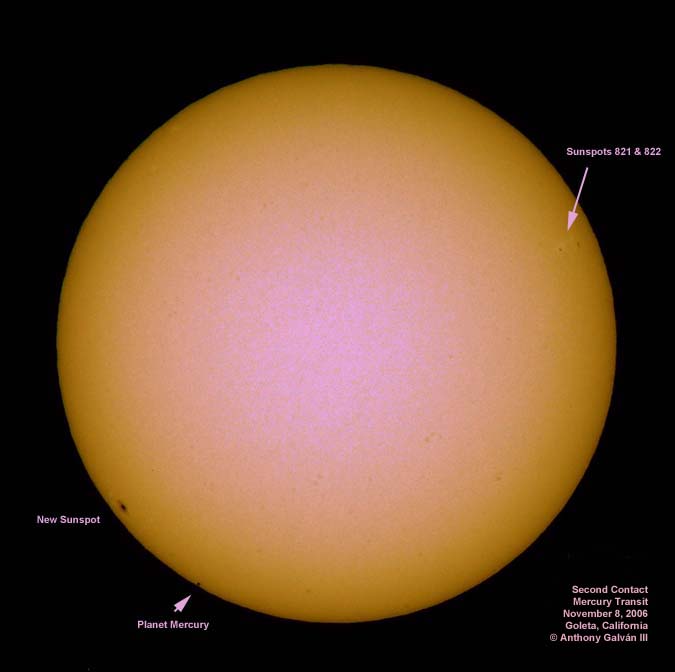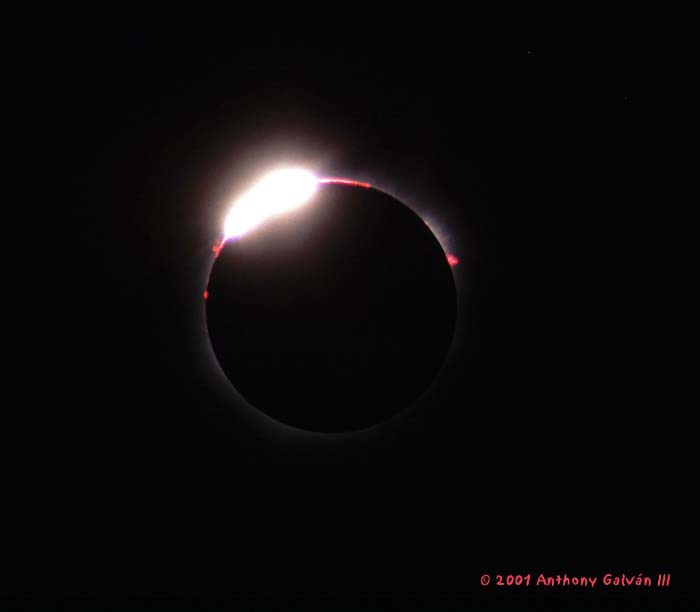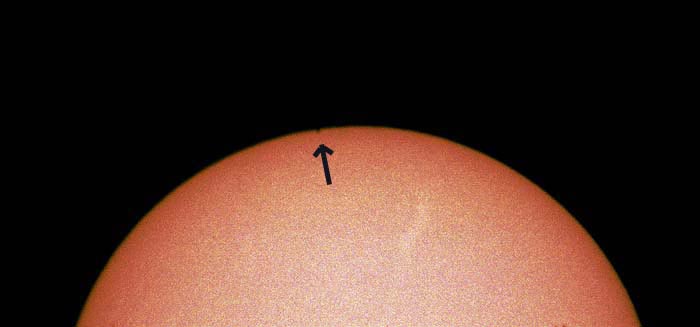
Astronomical Transits:
The dictionary offers this definition of a transit: pass across (a sign or house of the zodiac) or pass across (the disk of a celestial body or the meridian of a place); "The comet will transit on September 11"
On Wednesday, November 8, 2006, the planet Mercury will "transit" across the face of the Sun. If you happen to be at the right location on the planet earth you will be able to witness all or parts of the transit.
Mercury's path across the sun will be like this:

Things to watch for will be the various contacts. A contact is when the edge of one body touches the edge of another. In the cast of transits and eclipses, contacts can provide some interesting visuals.
Mercury Transit - November 8, 2006, Goleta, California
Second Contact - the sunspot on the left does have a number as of second contact time.

Second Contact - detail

Fuji S2 DSLR, Tamron 400mm w/ 2x extender, ISO400, Baader Photographic Solar Filter.
Contacts - Venus Transit, June 8,2004, Venice, Italy
lst Contact - first contact is when the transiting
body touches the outside edge of the sun. This is difficult to see in a planetary
transit due to the dark background created by the solar filter. In an eclips
of the sun and moon, it's often a bit easier to see. Rely on the correct transit
times to begin
viewing the transit.

2nd Contact - once the transiting body is inside the orb of the sun it occurs just as the left edge of the planet leaves the first inside rim of the sun. In a planetary transit look for the "teardrop" effect where the departing edge leaves a neck or shadow, hence the name "teardrop" effect.

2nd Contact - Venus Transit, June 8, 2004, Venice Italy

Tear drop effect, Venus Transit, June 8, 2004, Venice, Italy
Comparing the planets. This is a composite of the Venus and Mercury transit at second contact. Note the size difference between the two planets.

 <p>
<p>
3rd Contact - At the closing end of the transit as the transiting body leaves the orb of the sun it's leading edge will touch the outside edge of the sun. This is third contact.
4th Contact - When the trailing edge of the planet touches the outside edge of the sun we have 4th contact.Mid or Greatest Transit is when the transiting planet is midway across the face of the sun.<p>

In a solar eclipe, greatest transit would be totality, when the moon is in the middle of the sun with light streaming out from all sides, such as this view from the June 21, 2001 total solar eclipse in Zimbabwe.

This is what Mercury look like in its 1999 transit from Santa Barbara, California.

Still need more information on astronomy or astrophotography? Search now.
Back to the Astrophotography Home Page